Classic eruptions of Strokkur Geysir
|
Classic eruptions of Strokkur Geysir |
|
Water swells upwards forming dome (or bubble) shape |
Steam bubbles visible rising beneath surface |
|
Bubble surface breached |
Water spouts up through middle of bubble |
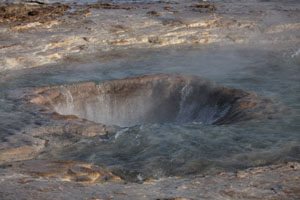 |
|
|
Geyser erupts water violently upwards |
Pool is emptied by regular eruptions |
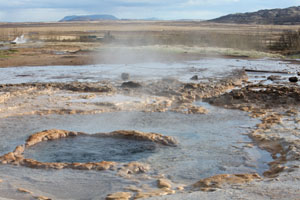 |
|
|
Pool refills after eruption(s) |
Water from eruptions partially flows down channel to top right |
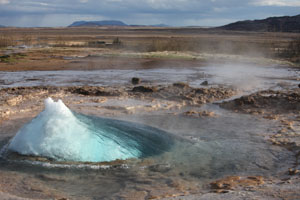 |
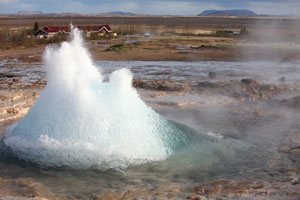 |
|
Asymetric eruption - bubble often emerges off-center |
Bubble bursting in front of tourist infrastructure |
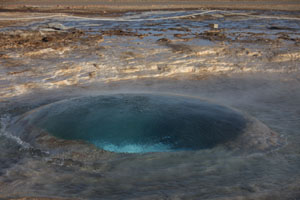 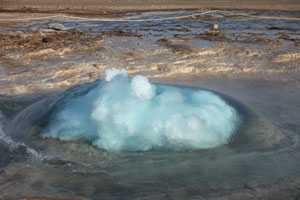 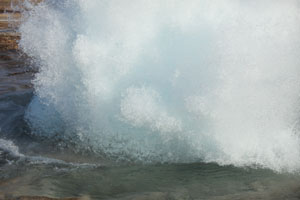 |
|
Sequence of three images from same eruption - Note first signs of bubbles in left image |
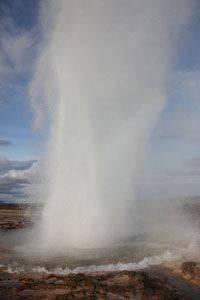 |
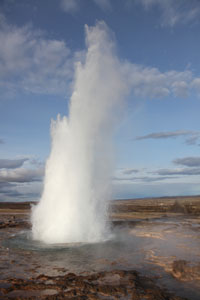 |
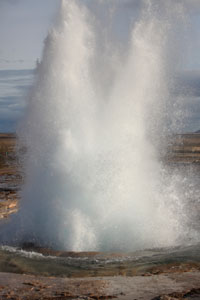 |
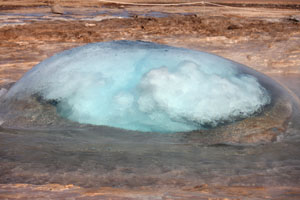 |
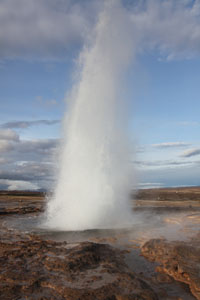 |
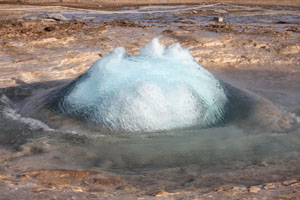 |